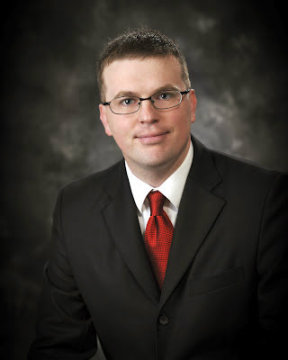This graph, courtesy The Christian Science Monitor, shows unemployment from mid-1997 to the present.
The red line shows people who currently have no job and are looking for full-time work. That figure, seen through the rose-colored glasses of the federal government, who want nothing better than votes for the party in power, is currently estimated at 9.6 percent.
The blue line adds to that figure part-time workers seeking full-time work and unemployed people who aren't looking at the moment because they have given up or because their unemployment check is carrying them for the present. This real unemployment figure is currently 16.7%.
Of course, that figure is only as accurate as the government statistics used to construct it. Not everyone believes in the accuracy of government statistics, particularly those whose business models won't work without accurate information. One such person, consulting economist John Williams, calculates the current real unemployment rate as much higher than 16.7%--more like 22%:
So where are all the jobs?
The folks at Investor's Business Daily, which follows such things very closely, are quite sure that those jobs are not to be found in big business, but in America's small businesses:
Our work — and we maintain a huge database on all public companies — shows that big businesses created no net new jobs over the last 25 years. Zero. Zip. When big businesses buy other companies, thereby padding their payrolls, they don't create new jobs. In fact, they usually consolidate and lay off people in duplicative positions. Many also downsize over time.
It is smaller businesses, and especially new entrepreneurial businesses, that drive each new business cycle. And the government — including the politicians who set tax policy — should recognize what these innovative companies do in their first 10 or 15 years.
The SBA defines a small business as one with fewer than 500 people. And yes, when Sam Walton started Wal-Mart and Bill Gates started Microsoft, each had maybe 30 or 40 employees. A year later they had maybe 75, the next year 120, then 320, then 501.What America needs, clearly, is for Obama and his team--who collectively have almost no experience working in the private sector--to get off the backs of small business owners, the very people who early on joined the Tea Party movement carrying signs that read, "Where is John Galt?" indicating their unwillingness to continue to work and risk and to work and risk some more in order to supply a power-hungry government with the financial resources to buy the votes of those who do not work.
From that point on, they were no longer considered small businesses. But over the next 10 to 15 years, one of them created more than 1 million jobs and the other 500,000.
The Obama administration is actively burdening small businesses with ever-more demanding costs and regulations that serve the IRS and Leftist group-think fashions like Obamacare and Cap and Trade.
America's small businesses are anxious to "spread the wealth around," but in the old-fashioned way, by hiring other people to help them develop profit-making enterprises that supply communities with the products and services that they want and need.
November.
__________






November: faster please! good post.
ReplyDelete